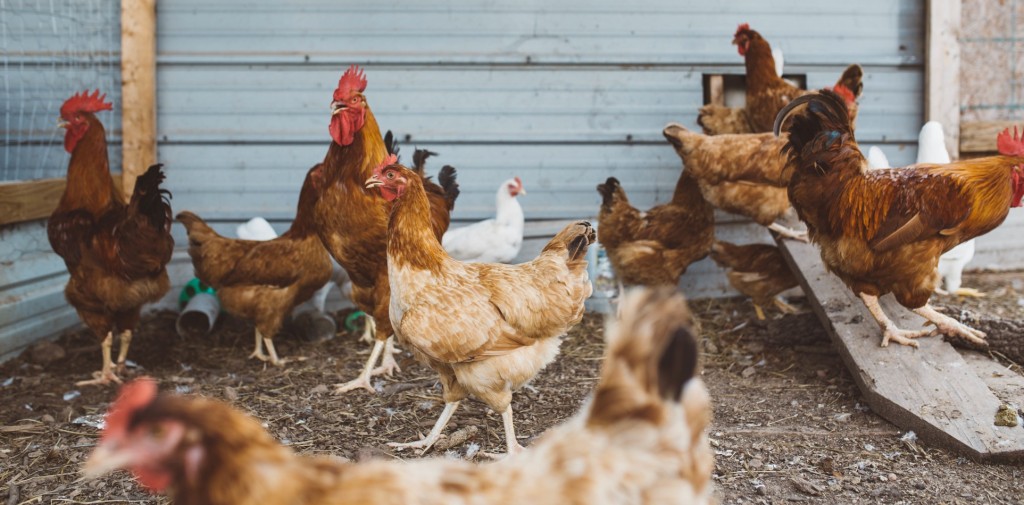
Sacrifice is part of the abundance that allows us to live. But I want the sacrifice to be done well.
We need to eat to live which means living things need to die for us live. A harsh truth, that.
Take our last batch of chicks, which included two cockerels (males). We learned we had cockerels around adolescence, when roosters’ feathers begin to outshine their female counterparts and they start to practice crowing. Thing is, we don’t keep roosters.
Mark, my husband, would say we don’t keep them on account of neighborliness, and that’s true enough. Roosters welcome the coming day with enthusiasm, and when daybreak comes at 4:30, that’s a mighty early wake-up call.
I tried selling these beautiful auburn-feathered roosters on Craigslist. Failing that, I tried giving them away. But as no one was in the market for a couple of Rhode Island Reds, we ended up slaughtering them.
“Noooooooo!” my niece responded, expressing appropriate grief. Indeed, this is the hardest task we undertake as stewards of Fern Creek Farm. We struggle with our power to determine what lives and what dies, especially when being neighborly to one sort of neighbor requires us to sacrifice another. Mark does the killing, and I do the de-feathering and cleaning; while my task takes longer and is messier, I prefer it.
Knowing we had two roosters to “process” (a euphemism used by those who would call our Killing Tree the “Processing Tree”), I asked our farm apprentice, Liz, if she wanted to participate. She said yes, and yes meant she wanted to participate in the entire process.
She stood with Mark and watched the roosters die, and then she and I each de-feathered and cleaned a bird. The meat was tender and earthy, coming from young roosters that had been running around crowing at the world a couple of days earlier.
I find it necessary to repeat this truth to myself: sacrifice is part of the abundance that allows us to live. The food chain is as violent as it is functional. That being true, I want the sacrifice to be done well.
Philosophers and social scientists draw a distinction between profane violence (senseless, with no purpose or good end) and sacred violence (which serves some unifying purpose or greater good). Drunken brawls are a form of profane violence. Fighting to overthrow a tyrant who oppresses you, your family, and your people might be regarded as sacred violence.
If the difference between sacred and profane violence matters, then might it be relevant to think about the kinds of violence required to harvest food? To be mindful is to know enough about the process to be both humbled by and grateful for the work and cost of the harvest—acknowledging that violence is part of harvesting which is part of eating which is necessary to live.
Good farming and good animal husbandry require compassion, attention, and love for place and the living things in that place. It also requires sacrifice. The closer one is to the harvest—to the reaping of plants and animals—the more mindful one is of the true costs of food.
Professor of Theology and Ecology, Norman Wirzba, writes:
Eating is the daily reminder of creaturely mortality. We eat to live, knowing that without food we will starve and die. But to eat we must also kill, realizing that without the deaths of others—microbes, insects, plants, animals—we can have no food.
Wirzba dedicates a chapter in his book Food and Faith to understanding the significance of sacrifice and a more redemptive view of death. Through a good death, life moves forward.
Perhaps sacrifice, as understood in an agrarian society like ancient Israel, is a way to see the difference between the violence of animal slaughter that occurred on altars and in households and the violence that occurs in slaughterhouses.
Sacrifice in Israel involved giving away a precious possession, released as a gift for another to sustain life. The story of the Good Shepherd held more richness for a community that understood what being a good shepherd demanded. Animals received tender care, food, and water even at the discomfort and risk of the shepherd. A good shepherd took on the lion or bear or wolf, even at risk to his or her own life. Caring for animals required a commitment to seek the one that was lost. When these cared-for creatures were presented to God as sacrifices, both the giver and the gift, according to Wirzba, were made sacred on account of that relationship.
The giving up, or sacrifice, of an animal for food was costly both to the animal (who had no say in the matter) and to the one who tended that animal with compassionate care. While the depth of that ritual is lost to us, it offers an alternative to the mass and impersonal killings that happen in slaughterhouses. Animal husbandry ends where the industrialized raising of animals begins. Slaughterhouses impose an impersonal violence, a profane violence that happens far away from our lamb-, beef-, chicken-, or pork-laden tables.
Eating ethically requires mindfulness and a fair amount of inconvenience. One pays more for naturally grown produce and compassionately raised and slaughtered meat because harvesting responsibly involves intensive work that can’t be done quickly. Indeed, much of the work is done by hand. We, like the farmers at most family-run organic farms, pick slugs off of lettuce and smash cucumber beetles copulating on squash blossoms between our fingers while picking zucchini and crookneck squash.
The food tastes better. The food is better—for the body and the soul, for neighbors near and far.
Because we farm on a small scale, we know the land and some of its inhabitants and our affection for it grows deep. We know berries love the Pacific Northwest climate, and slugs love both the climate and the berries. We learn which rock walls the king and garter snakes like for nesting and where we will likely come across one in the strawberry patch. Since I know they are harmless to me, I occasionally pick one up and let it slide between my fingers and around my wrist, a more-cool-than-warm, smooth, rubbery being very full of life. He or she is probably also full of fear. So I don’t hold them often, or for long. This land is their home, just as it is mine. They are among my many neighbors, and are particularly helpful at keeping mice and voles out of the garden.
Most people won’t raise their own food; but the closer to home we can eat, the more we can learn about how our food is grown. The more we learn about where our food comes from, and the way sacrifice is carried out, the more compassionate our eating can be.
Eating food harvested responsibly is a stronger ethic than only valuing abundance and access to food. Ethical eating comes full circle when it draws us toward affection and gratitude. Affectionate eating calls us to love God, neighbor, and creation through the daily choices we make that are related to food. When harvesting practices are defined by compassion, justice, and good stewardship, we heal broken parts of the world, coaxing out a healthier land, healthier animals, healthier laborers and, it turns out, healthier selves.
This article is adapted from a chapter from Lisa Graham McMinn’s To the Table: A Spirituality of Food, Farming, & Community.
